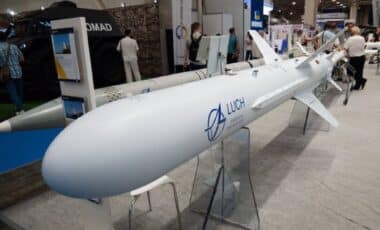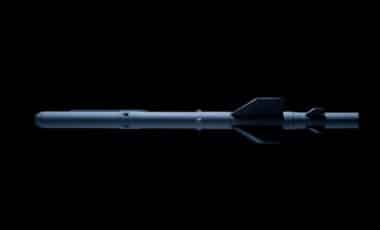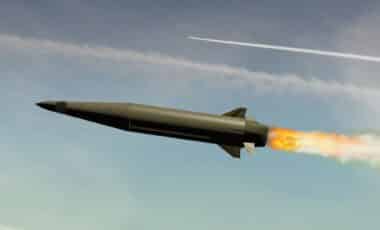On May 15, 2025, the Royal Navy unveiled its latest technological advancement: Excalibur, the first autonomous submarine drone developed for military use. This innovative underwater vehicle, known as XLUUV (eXtra Large Unmanned Underwater Vehicle), is set to enhance surveillance and reconnaissance capabilities while minimizing risks to human lives. With its impressive design and powerful capabilities, Excalibur could play a pivotal role in the future of naval operations.
Part of the UK Ministry of Defence’s broader Project Cetus initiative, Excalibur marks a significant leap in autonomous technology. The drone, currently undergoing testing, is designed to carry out various underwater missions that were previously reliant on manned submarines. Its size and features differentiate it from other unmanned underwater vehicles developed globally, positioning it as a potential game-changer in naval defense, reports Armées.
This 44-ton warship is faster than a missile… and takes no human orders
Key Features and Specifications
Excalibur stands out with its remarkable size and technological innovations. Measuring approximately 12 meters in length and weighing between 19 and 21 tons, it is significantly larger than many existing unmanned underwater vehicles. The drone’s diameter of 2.2 meters and width of 2 meters contribute to its robust design, which enables it to dive to depths of up to 400 meters—surpassing the capabilities of manned submarines in operation today.
According to the Ministry of Defence, Excalibur is intended to operate autonomously for extended periods, offering enhanced capabilities in surveillance, reconnaissance, and intelligence gathering. The vehicle’s modular architecture allows for future upgrades, making it adaptable to a variety of missions. Despite being in the testing phase, it has already completed a series of initial trials, with rigorous assessments planned for the next two years.
Strategic Significance of Excalibur
Excalibur’s introduction aligns with the UK’s increasing focus on autonomous military technology. As part of Project Cetus, which was launched in 2019, this drone is a crucial component in the UK’s strategic vision for future naval operations. According to Commodore Marcus Rose, the drone’s testing and deployment could lead to more widespread use of unmanned systems in naval defense, transforming how the Royal Navy approaches underwater missions.
The Royal Navy’s decision to develop Excalibur reflects the growing global trend toward automation in military operations. The drone is part of a broader movement that aims to integrate autonomous systems into existing naval fleets, enhancing operational efficiency and reducing human risk in combat zones. The first public demonstration of Excalibur took place in February 2023, setting the stage for its future deployment.
Global Comparisons and International Developments
While Excalibur is a notable achievement for the Royal Navy, other nations are also developing their own autonomous underwater vehicles. For instance, the United States has produced the Orca drone, a larger and more powerful vehicle built by Boeing. With a length of 26 meters, the Orca weighs 50 tons and can carry an 8-ton payload, offering greater operational range and endurance than Excalibur. Similarly, China is working on its own XLUUV, measuring 11.5 meters in length and weighing nearly the same as the Orca.
France is also part of this international race, having initiated the development of the Unmanned Combat Underwater Vehicle (UCUV). At 10 meters long and weighing 10 tons, the UCUV shares some design similarities with Excalibur, though it is intended for more combat-oriented missions.
The Future of Autonomous Underwater Warfare
Excalibur represents a significant milestone in the development of unmanned underwater technology, setting the stage for more autonomous and robotic naval missions. The Royal Navy’s emphasis on integrating these advanced systems with existing fleets suggests a future where human-controlled and autonomous vessels work in tandem to carry out complex missions.
As the development of Excalibur continues, it is clear that the drone has the potential to reshape naval operations, providing enhanced capabilities while minimizing the risks posed to human personnel.








